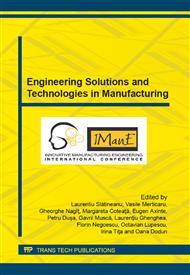p.1006
p.1011
p.1016
p.1021
p.1026
p.1031
p.1036
p.1041
p.1046
Conceptual Product Design Inspired from Nature
Abstract:
Nature offers a great deal of opportunities for mimicking and inspirations which are already there for long periods and evolve by themselves. A number of scientists from different backgrounds are using it as an inspiration for their designs i.e. material science, algorithms, robotic arms and manufacturing systems. From the conceptual point of view, when designing a product, different approaches can be used, for example similarities in the geometrical form and the functionality. The fact that the inspirations from nature have a number of restrictions due to the lack of common terminology and frameworks platforms for all sciences, can form the main advantage in the area of conceptual product design (CPD). This is true because CPD is more of an art than an actual science and for this reason can transform the main disadvantages of mimicking to a great extent as a serious advantage. Those inspirations in the conceptual level can lead to further opportunities for research and economic success. A number of illustrative case studies are presented in the paper.
Info:
Periodical:
Pages:
1026-1030
Citation:
Online since:
October 2014
Authors:
Keywords:
Price:
Сopyright:
© 2014 Trans Tech Publications Ltd. All Rights Reserved
Share:
Citation:


